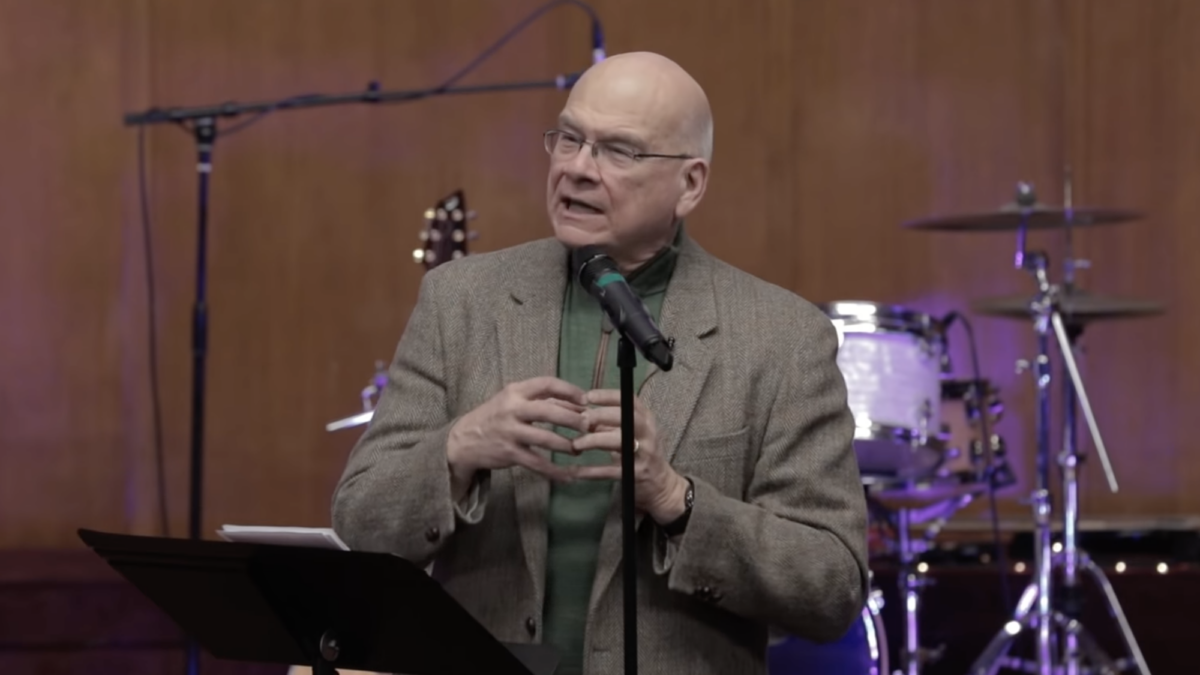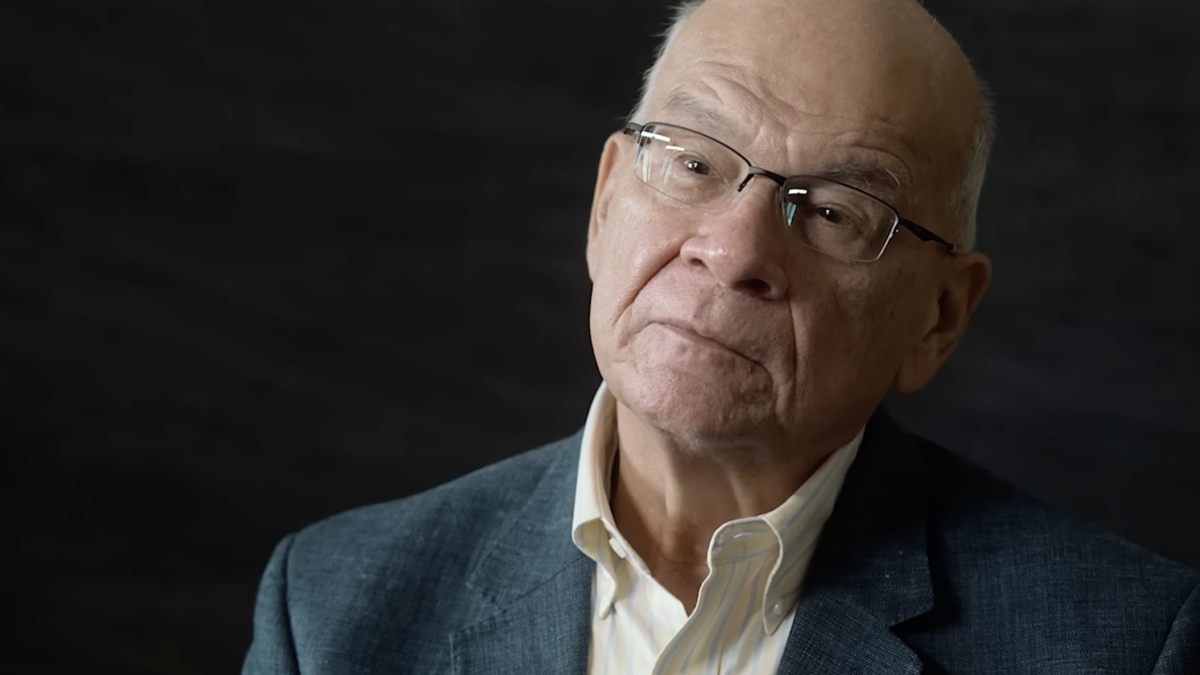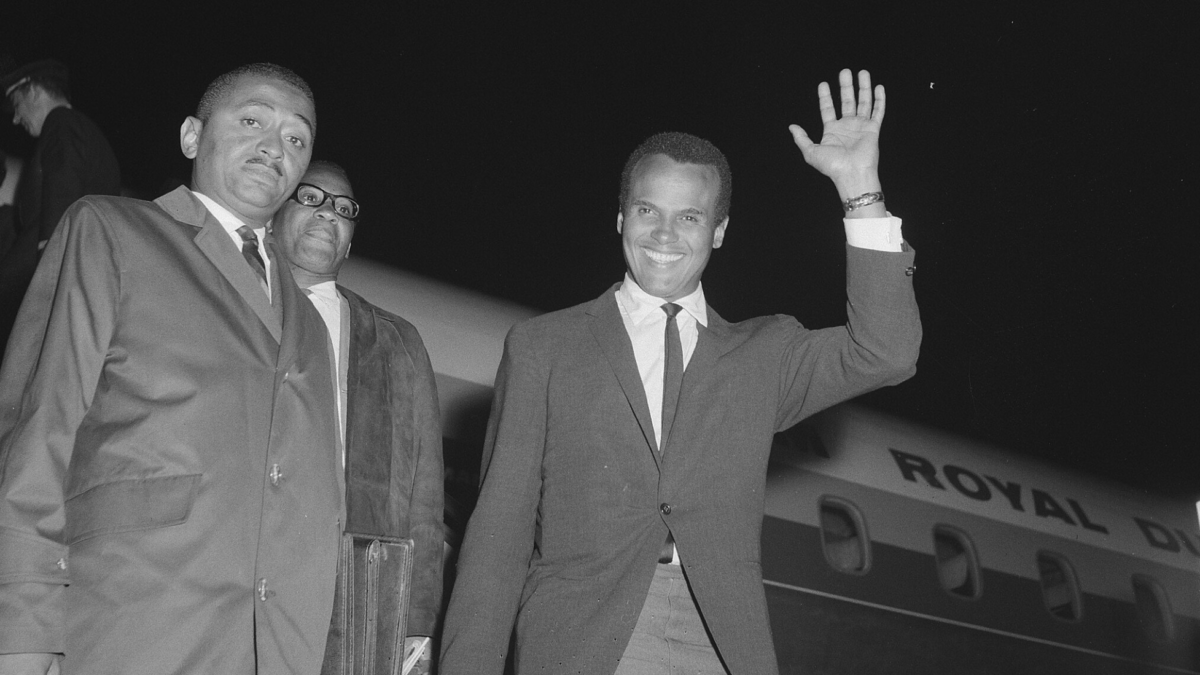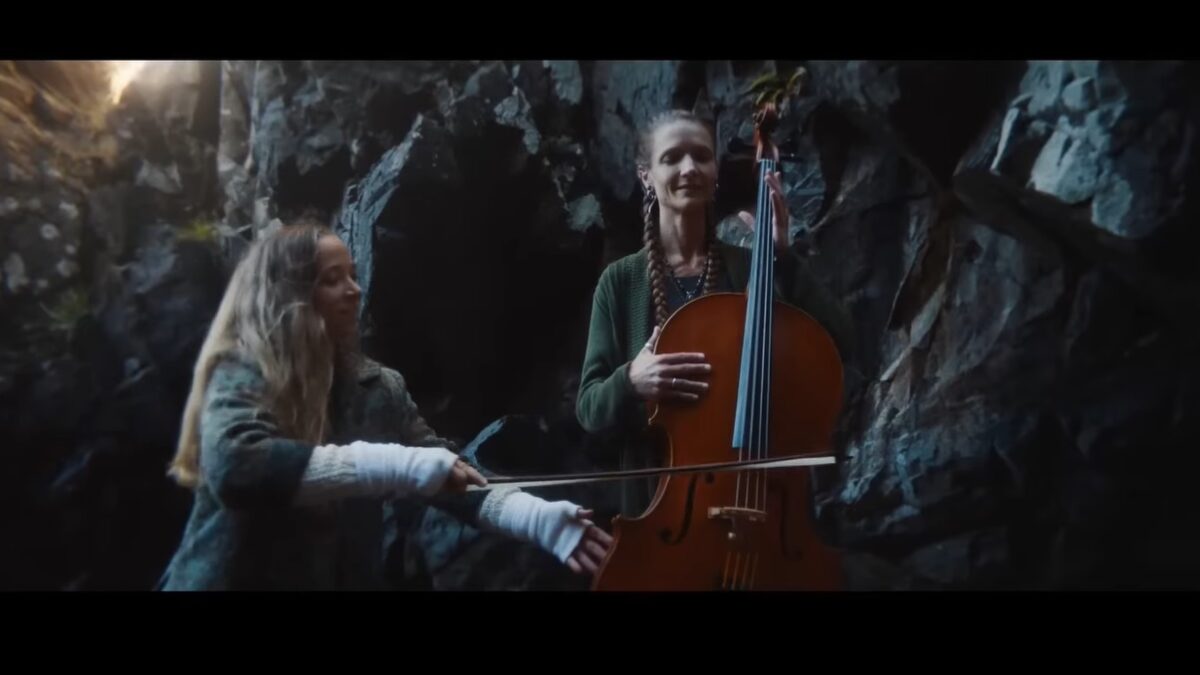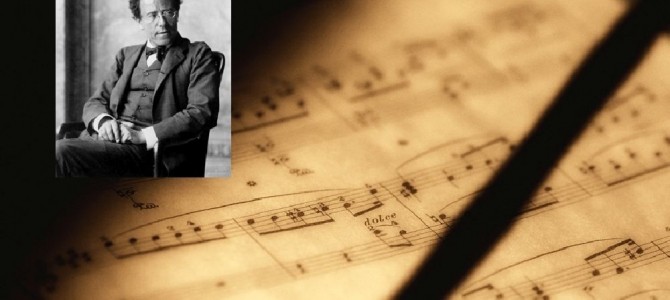
In the summer of 1910 Gustav Mahler’s doctors told him if he tried to write another symphony, it would kill him. But he couldn’t stop; he couldn’t not do what was in his soul to do. Also, maybe if he wrote it well enough, he could get Alma back, his wife, who set his heart to anguish by having an affair with Walter Gropius.
So he put the curse of the ninth aside, and set about writing his Tenth Symphony. Indeed, it killed him. That’s why it’s known as his unfinished symphony. It also may be why it has often been said to be entirely about grief and death, to contain in its movements, clearly delineated and in sequence, all five of Kubler Ross’s stages of terminal illness: denial, anger, bargaining, depression and, finally, acceptance.
It is an exquisite symphony, especially Deryk Cooke’s version (someone had to finish it, and various people tried), especially the last movement, the “acceptance” movement. It once saved me, delivered me, from an emotional quicksand from which I could not find a way to extricate myself.
I had been to Auschwitz. I went alone, my wife having been there before, with no desire to return. I took a night flight to Warsaw, train ride to Krakow, then a taxi to the small, unremarkable town of Oświęcim, which was unremarkable except for this: It had been nothing, then after a short while it became nothing again, but for that brief period in between, it was the locus of the most revolting orgy of mass murder in recorded history.
I Couldn’t Stop Thinking about the Hooks
I spent a day at Auschwitz-Birkenau, then returned to my wife’s family home in Luxembourg, thinking I would move on. But I couldn’t move on, because I couldn’t stop thinking about the hooks. No matter how hard I tried, I couldn’t stop thinking about the hooks, and the moment they knew.
You see, they gave the prisoners hooks on which to hang their clothes. They were small hooks, everyday hooks, on the walls of the basement corridor, a cramped, unpleasant corridor for disrobing, which they would do, humiliated. They did this together, men, women, and children, strangers and the opposite of strangers, and each hook had a number. They were told to be sure to remember the number of the hook on which they left their clothes so they could retrieve them after they were showered and de-liced.
This, too: As you look at the remnants of the changing room, down at the end, on the left, adjoining this room and perpendicular to it, of similar size, is the “shower” room, long and narrow. It was also underground, originally, and has no ceiling now, just the foundational remains and parts of the walls, enough so you can visualize it and get a sense of its dimensions, its size.
As you look at this, you say to yourself that this room, this “shower room,” would be crowded if there were 100 people in it—but you know that as the pellets were dropped, there were not 100 people in this room, there were 1,500, naked, frightened, degraded, humiliated, but still hopeful, because, after all, they needed to remember the number of their hook so they could retrieve their clothes.
Then, of course, there came a moment, and that’s the moment I can’t get out of my thoughts. The pellets began to hiss, and there was no water. Then they knew they were being murdered. I keep thinking that of all those people there must have been one or two or maybe a lot, as it started to happen, who thought of those hooks and said to themselves that this cannot be—they told us to remember the number of the hooks.
By telling them to remember the number they were giving them hope, a belief that once they survived the mortification of mass nakedness, the degradation of this particular moment, they would live to see future moments, moments that might be difficult to endure, but at least there would be those moments, and maybe their children would survive this shower and this day. The hooks told them there was to be a future, some kind of future.
But, of course, the hooks were a lie, a ruse to allay panic, and those who told them this lie knew full well that there was no hope at that point, no future at all, excepting a brief one that would seem to last an eternity, the 15 or 20 minutes it would take them to die painfully from the Zyklon B pellets dropped on them as the final indignity.
They realized this tale of the hooks was the last lie, and maybe the very cruelest one of all, beyond even the physical cruelty and the intentional humiliation, because maybe, really, that is the one truly unforgivable thing, to give a desperate person hope when you know there is none, and the reason you do so is for your own convenience.
Trapped Inside Denial
I had been back in Luxembourg for ten days, but I could not stop thinking about Auschwitz. The reflections that gripped me lacked clarity or direction or cohesion, and I was agitated by a nagging melancholy, exhausting and aimless. No matter how fervently I sought distractions, to move on, I could not find a way to not think about it. I couldn’t quell a sense of unspecific but desperate urgency, a feeling that something was happening and it must be prevented, hindered, prohibited, or, at least, impeded.
Illogically, I could not accept there was nothing that could be done, not anymore. It couldn’t be stopped because, of course, it happened decades ago, and nothing could change that. Still, it seemed impossible to think that these things could remain anywhere, even in history. Something must be done to go back and prevent it from happening. Of course, that will never be possible, because it did happen—even though you can’t even fully grasp what it was—but it happened, and if only there were a way to make it not have happened…
There was much more, and it was all stuck in my head, skipping over and over like the needle on an old LP record, Marlene Dietrich’s voice trying to break through the scratching and crackles, soulful and sad and hopeless. In Kubler Ross’ terms, I was enmeshed in a kind of chronologically fractured attempt at denial, and felt as if I would be trapped in this place forever.
I was heartened, then, when we heard that the Czech Philharmonic Orchestra was giving a performance of Mahler’s Tenth Symphony. I considered this a stroke of luck, maybe even providential. I was familiar with the symphony, its history and implications. Mahler could help me with this, as he had with other difficult things before, with his remarkable Tenth Symphony, the symphony of death, the symphony about, in the end, acceptance.
The Soot on the Ceiling
So, on a cold February evening we drove the 20 kilometers to the lovely new concert hall in Luxembourg City, and, amidst the festive, decorous concert-goers, I listened. For the first time since I had returned from Poland, I did not try to resist the memories. Instead, I embraced them and allowed them—even encouraged them—to wash over me, to penetrate, and the roiling sense of horror that I had been trying to fend off enveloped me.
There is a crashing, crushing anger phase to the symphony, and I thought of the soot on the ceiling. I remembered that it felt wrong to look too long directly at the ovens with their heavy metal doors, the ones you see in pictures that swing open and shut and look like submarine compartment hatches with the big, brass wheels that locked the door tightly shut when the bodies were in. So I looked up and saw the soot on the ceiling, and I don’t know why I didn’t expect to see soot, but when you think of it, I should have expected it, but didn’t. I looked up, and incongruously and outrageously, it made me recall seeing soot like this on another ceiling in another place years ago.
It was in Egypt somewhere—an interminable, dusty and uncomfortable van ride into the desert—to a place in the middle of nothing where the first generation of Christians went to hide out, centuries ago, in the first century A.D., to hide from the Romans and the others who wanted to kill them because they had become followers of this Jesus the Carpenter. So they hid out in the relics of a temple, a temple that 2,000 years ago was already 1,000 years old, even then in ruins.
Amid the soaring, decaying columns and the yawning, mysterious, shadowy caverns, the small, 2,000-year-old wall etchings stunned and stopped you and made you catch your breath. Even more remarkable than this graffiti— and that’s what it was, really, primitive drawings of the ichthys, the fish symbol, the well-known early-Christian “tag” that survives amongst evangelicals today—even more remarkable than the fish symbol carved into the columns of the temple ruins, carved centuries ago by those frightened but determined Christians, was the 2,000-year-old soot on the ceiling created by the furtive campfires of those early Christians. I wondered then how long it would take for the soot to go away. Would it last forever, would it never go away?
Maybe my mind had had enough, as I turned away from the ovens at Auschwitz, more than I could bear that day in that place as I looked up at the ceiling and saw the soot. Of course there was soot, because thousands of burning bodies—no, not thousands but tens of thousands, and even more than that—would produce soot, like the campfires of the early Christians somewhere in Egypt, only completely different. I guess it’s completely different, but, still, it’s soot on the ceiling… My God, it’s soot on the ceiling. My dear God, it’s soot on the ceiling…
The Ghastly Tapestry of Portraits
The music continued and the thundering anger gave way to a different rhythm, a sprightliness, and soon I was recollecting the pictures at Auschwitz. The corridor walls are lined with thousands upon thousands of small portraits, the galleries of the doomed. They are mug shots, each one a kind of cynical triptych, with a face—frontal view—then a right profile and a left profile.
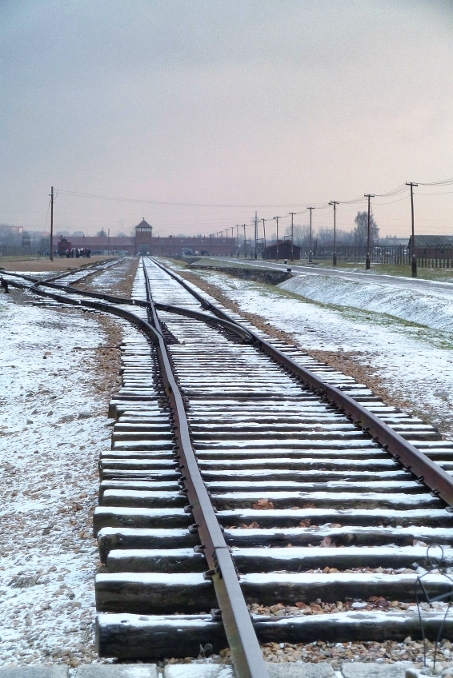
The inmate wears the familiar stripes so, taken together, all these thousands of images form a ghastly tapestry on the walls, a kind of awful texture, until you look more closely and begin to see individuals and to notice unique and revelatory aspects about each one, tiny things: a raised eyebrow, a scar, perhaps a gold tooth, a human detail, and now you are looking at a person.
These pictures were taken upon the inmate’s arrival, and even though the journey, by all accounts, was horrific, so much so that many did not survive even that first part of the ordeal, the faces that look out at the camera, at you, appear surprisingly healthy, even robust. Frightened, yes, but not yet what they would become so quickly: skeletal and done. Each triptych records, in Germanic meticulousness, the date of arrival then of death, and without realizing it you begin to do the math and come to realize that none of them lived more than a few months.
There is a wide array of ages, from young boys to middle-aged men, and since the arrival dates are all the same, it’s sure they came from the same place at the same time and probably knew each other. The pictures of one young man caught my eye. He was fresh-faced, with newly cropped hair, really a crew cut in another world, the two profiles and the full face with eyes looking directly at the camera. He looks fit and typical and has plump cheeks and piercing eyes, and I see from the notation that he will live four months from the date of this picture.
What They Want Is Death
But there is something in his expression that puzzles me, some thought or feeling issuing from his demeanor that reaches out, and I can’t quite pinpoint what it is. Certainly he is afraid, and confused, and disoriented, all that, and you see those things in every picture. But there is something else, and I stare at the triptych, the young boy’s mug shot, for a long time, puzzling over what I’m seeing.
Finally, I know what it is: He is trying to figure out what they want him to do.
He hasn’t yet fully understood that the only thing they want him to do is to die. You sense as you look at his picture that he has enough hope left, and enough life, to believe that if he can just figure out what they want him to do—maybe bargain a bit—he can survive. You feel an edgy discomfort, and in a way ashamed that you know now what he didn’t know then, because, if he had, his expression would have instead reflected the knowledge of his certain death, and not an eagerness to figure it out.
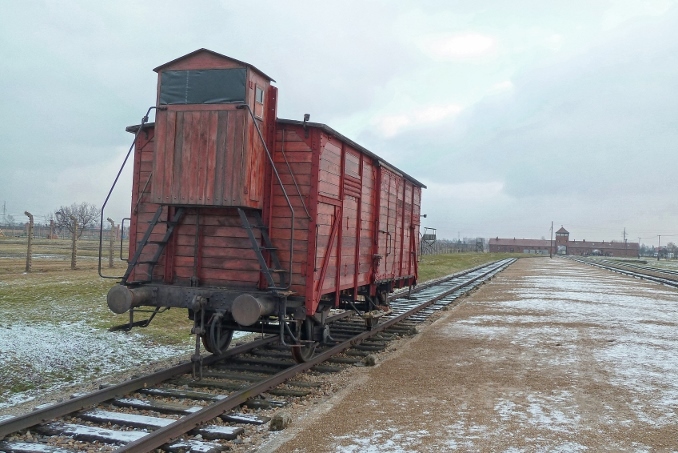
You know that and he doesn’t, so you feel you are violating in some way his last chance at dignity, even though you know that if you were sitting there, your mind, too, would be racing through the possibilities, keenly sensitive to any nuance, any clue that would help you determine, if only for the next few minutes, what you needed to do in order to survive.
Again, the music’s tone and its tempo changes, slows, gains weight, and I am motionless, listening, eyes closed, not watching the orchestra but, instead, remembering.
A Long Walk in the Snow
I made the walk that cold January day to the ovens, the four crematoria hidden from view behind the distant tree line. You begin at the railroad crossing, the one so familiar from old, grainy pictures that show an SS officer with a short crop directing throngs of new arrivals either one way or the other, making the infamous selection. I made the walk—and it is a long walk, longer than you would think—along with the 30 or so others in my guided group.
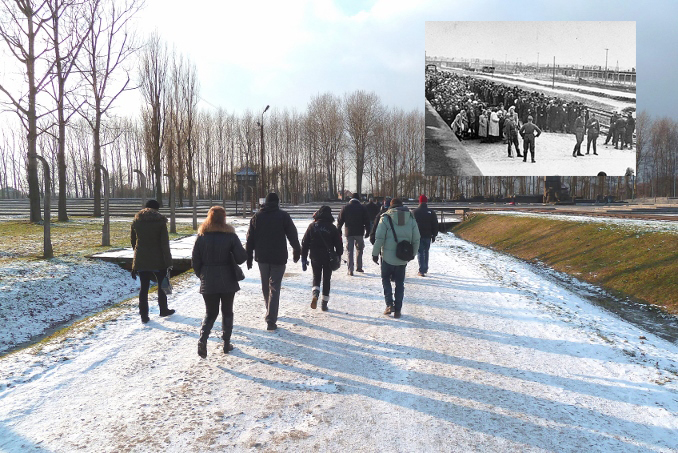
We moved purposefully, unrushed, without speaking. The sound we made, the only sound, was the familiar, small crunch of our boots pressing and squeezing through a thin dusting of fresh snow on packed gravel. I realized that if I looked down and almost completely closed my eyes, if I listened only to the sound of the boots and shoes of we 30 people in that fresh snow, then I am probably hearing exactly what tens of thousands of the doomed heard, in exactly the same place, as they proceeded along this same road. As I looked down, as some of them probably did, confused, exhausted, terrified, maybe I was seeing exactly what they saw, too, the snow and the gravel passing by my feet, not looking up because there was no point, since it was a crowd, and you couldn’t really see where you were going.
I imagined the demoralized souls who made this walk, group after group, day after day, and I knew I can never begin to experience what it might have been like, but this is probably the closest I will ever come.
My throat was dry, my eyes began to tear, and I thought to break away from the group, to sit for a while, to gather myself and maybe to find some resource with which to cope with a heart so heavy that it feels as if it won’t survive. But I didn’t. I continued on in silence with my group, and the five-minute walk seemed to take forever, and the footsteps and the crunching in the snow seemed to go on and on, but eventually we arrived at the end. We were at the site where they had the four crematoria, the spot where more human beings were purposefully destroyed than anywhere else on Earth.
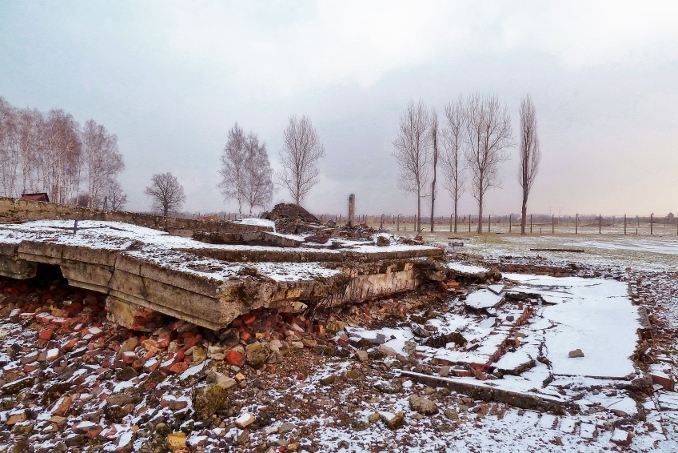
I paused. I looked around. The guide was gone, the sun setting, the others had drifted away, and, for the first time that day, I was finally allowed to be alone and to breathe deeply.
I thought to myself, after a time, this: If there is an epicenter to the heart of darkness, surely this is it. Surely, this is ground zero, this spot, right here. Not here, generally, this Auschwitz-Birkenau place, but here, specifically, by these fallen shards of concrete, broken pieces, the remains of the crematorium that they blew up in an attempt to destroy the evidence, where I’m sitting and where I can hear a soft breeze brushing through the trees behind me, and where there is still the faint aroma of votive candles that have recently spent themselves, the flame exhausted, gone as surely as the loved ones or relatives or even distant, unmet kin who perished here, and for whom the candles were so sadly and pathetically left, along with a name scratched on a shingle or a bouquet of flowers, tied carefully with a colored ribbon, left atop the stones, fading quickly in the cold.
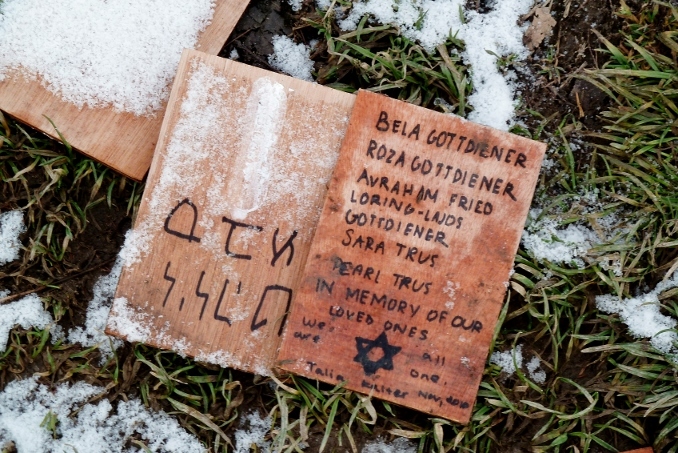
I thought It gets no worse than this, and I thought that over and over again, even though I cannot fully grasp the truth of what happened here; I don’t believe it can ever be fully harnessed. The best we can do is try for pieces of it at a long reach and ponder the small shards that simply won’t fit themselves into something that could ultimately be fathomable.
I can only sit by these rocks in this place and try, out of respect and a desire to believe that there is some baseline thread of humanity that cannot be extinguished even by a place like this, to think of individuals rather than millions, and when you do that it will make you understand, in part, perhaps not totally or even very much, but it will make you understand just a bit, the authentic and odd purity of despair.
Finally, as I rose to make the long walk back, away from the crematoria and to the parking lot humming with buses of tourists from all over the world, along the way, after a while, Baudelaire came to mind. Incongruously, but I thought as I walked that he was right, this dissolute, tormented Frenchman; he was right when he said the Devil’s greatest trick is convincing us he doesn’t exist.
The Last Notes Are Acceptance
Now in Luxembourg, I sat and listened. Mahler’s symphony arrived, at last, at the final movement, gentle, enveloping, soothing, a musical poesy of acceptance. It was sublime and elegant, an intense distillate of sadness so complete and so unencumbered that it became something else, something healing. It relieved, somehow, the necessity for explanation or understanding and became only that one thing: acceptance, in fullness and simplicity and tragedy. I felt transported by it and, in some way I can’t understand, for reasons that I cannot give expression to, forgiven.
The last, tiny, exquisite, extended note sounded, barely heard. Then silence, a long, stunned silence before the audience could gather itself and recover, and then begin to applaud, slowly at first and then building into a sustained, respectful, explosive thunder of appreciation.
I sat, my hands on my knees, motionless, tears creasing my cheeks. I knew that I was released. I knew the images would never leave me, that I will never understand, and there’s nothing I can do. And I knew I could move forward. I heard the words in my head. Thy will, not mine, be done. Again: Thy will… not mine… be done.
I asked my wife to drive, as we headed out of the city. I was ready for tomorrow, and for the day after that.
Photos courtesy of and © Henry Scanlon.


